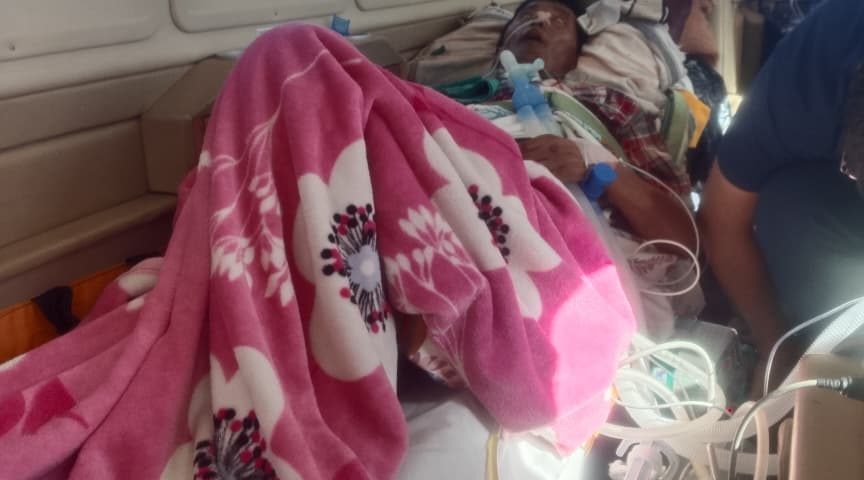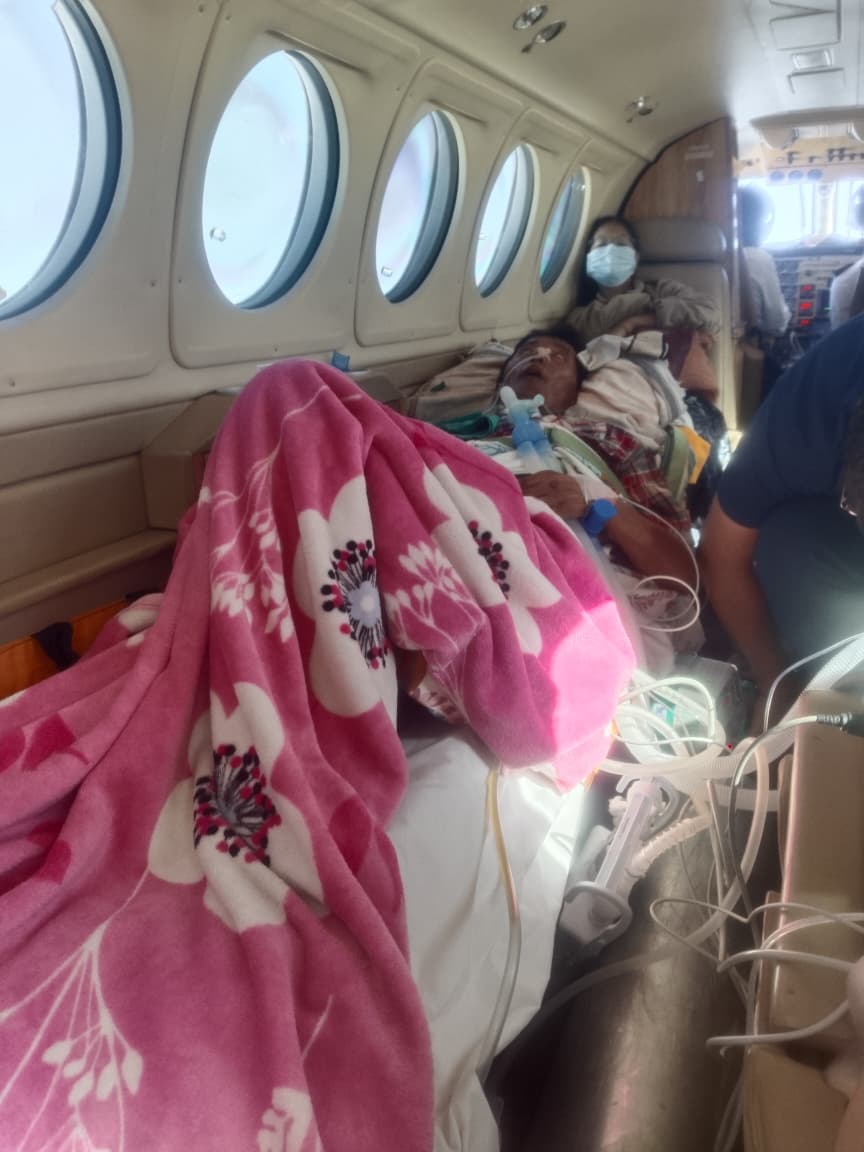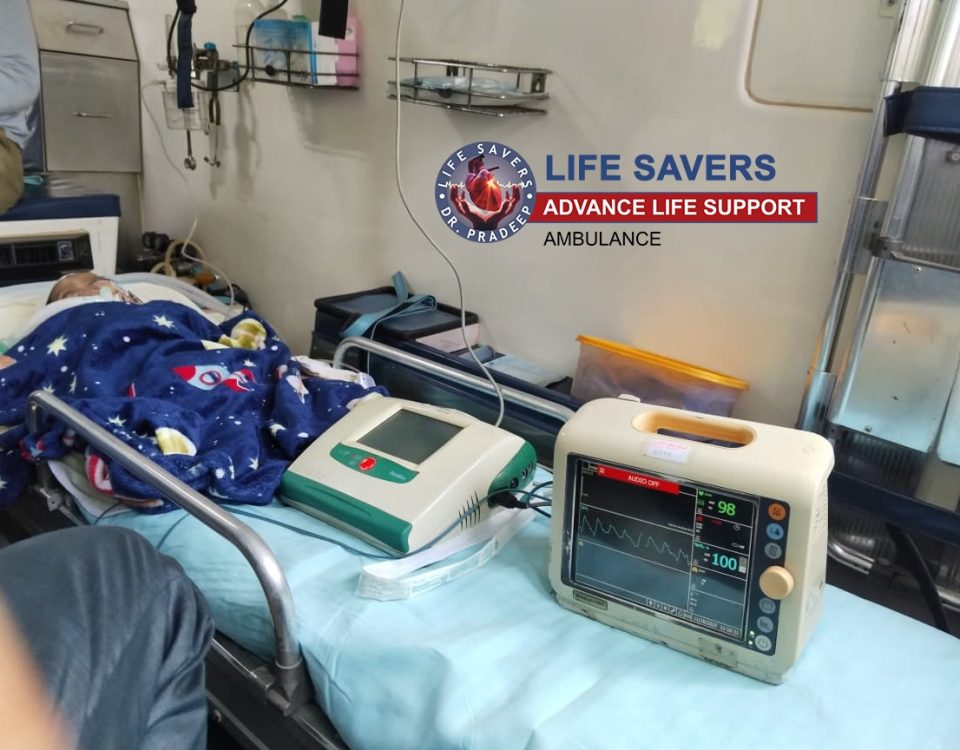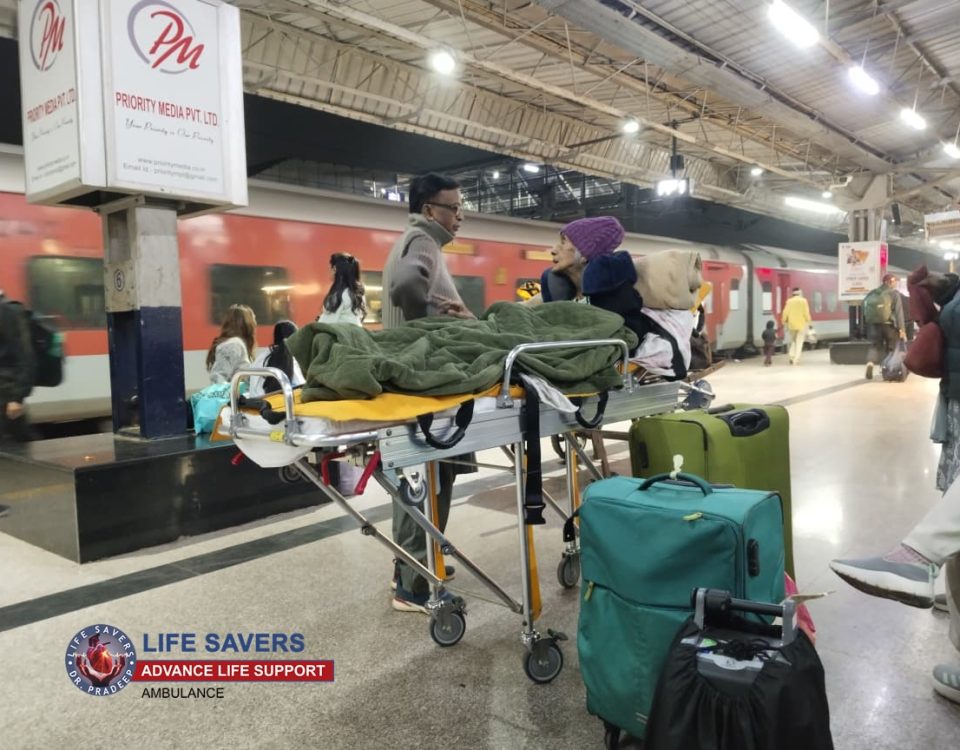Air Ambulance Transfers a Critically Unstable Patient From BLK – Max Super specialty Hospital Delhi to CHISR Dimapur (Nagaland)


In the world of emergency medicine, there are cases that test not just medical knowledge, but courage, coordination, and the ability to make life-saving decisions within seconds. The recent air evacuation performed by Life Savers Air Ambulance Service stands as one such unforgettable mission—an intense, medically challenging, and emotionally charged rescue flight involving a 48-year-old male patient with severe post-surgical complications.
What unfolded was a story of resilience, rapid action, and unmatched aeromedical expertise.
This blog captures the gripping journey step by step.
Patient Background: A Post-Surgery Case That Escalated Into a Crisis
The patient, a 48-year-old man, had undergone thymus surgery and was initially recovering. However, the post-operative period soon turned into a devastating sequence of complications that pushed him into a dangerously unstable state.
Major Medical Complications Included:
MRSA in Lung Biopsy
MRSA (Methicillin-Resistant Staphylococcus Aureus) is an aggressive, treatment-resistant infection.
It had affected the patient’s lungs, severely impacting respiratory function and increasing infection control risks.
Severe Mitral Regurgitation (MR)
The patient’s heart was under strain due to mitral valve leakage, causing unstable blood flow, reduced oxygenation, and frequent cardiac fluctuations.
Continuous Intra-Arterial Monitoring (IAM)
The patient required real-time arterial pressure monitoring, a sign of extreme instability.
Vasopressor Support – Norad (Norepinephrine)
The patient's blood pressure was difficult to maintain, requiring continuous Norad infusion to keep it within survivable limits.
Tracheostomy in Place
The patient’s airway was surgically opened. Managing ventilation for a tracheostomized patient in-flight requires exceptional skill and equipment.
High Ventilator Settings
His lungs were too weak to maintain normal breathing.
Only advanced ventilatory support could keep oxygen levels stable.
The combination of MRSA, cardiac complications, respiratory instability, tracheostomy, and vasopressor dependency made this one of the most complicated cases any air ambulance team can encounter.
Why an Air Ambulance Was the Only Hope for Survival
Ground transport was out of the question.
The patient needed:
- A full ICU setup
- High-end ventilator
- Continuous critical care monitoring
- A team capable of handling instant deterioration
- Fast evacuation due to infection risk and cardiac instability
Life Savers Air Ambulance Service was chosen because of its proven ability to manage high-risk, high-intensity medical transfers, even over long distances like Delhi to Dimapur.
Mission Preparation: Coordinated With Precision
Every air evacuation begins long before the aircraft takes flight. This mission required multi-layered planning, involving:
1. Comprehensive Medical Assessment
The Life Savers medical team reviewed:
- Surgical reports
- Infection severity
- Ventilator dependency
- IAM readings
- Required vasopressor dosage
- Cardiac risks from MR
Understanding this complexity was crucial to designing the safest transport strategy.
2. Bed-to-Bed Coordination
From the Delhi hospital to Dimapur’s receiving facility, the team ensured:
- Smooth handover
- Continuous monitoring
- Zero disruption in medical support
- Proper communication between all departments
Bed-to-bed coordination is what ensures that the patient never loses support—not even for a moment.
3. Aircraft ICU Setup
The aircraft was equipped to function like a flying critical care unit, including:
- ICU ventilator
- Multi-parameter cardiac monitor
- IAM-compatible monitoring
- Emergency defibrillator
- Syringe and infusion pumps
- Suction machine
- Backup airway equipment
- Emergency resuscitation kit
Every piece of equipment was checked, calibrated, and tested before takeoff.
4. Expert Aeromedical Team Onboard
The flight included:
- A senior critical care doctor
- An experienced flight paramedic
Both trained in:
- Aeromedical emergencies
- Ventilator management
- Infection control
- Cardiac stabilization
- In-flight rapid response
This was not a general emergency team—this was a specialized critical care aviation crew.
The Flight: A Battle Against Time in the Sky
Once airborne, the true intensity of the mission began.
The patient was unstable, dependent, and fragile.
The slightest change could trigger a life-threatening event.
1. Oxygen Saturation Drops
Multiple times during the flight, saturation levels dipped due to:
- Weak lung function
- MRSA infection
- Ventilator-compromised exchange
The team adjusted ventilator settings, suctioned airway secretions, and optimized oxygen flow.
2. Ventilator Pressure Instability
Tracheostomy patients often present challenges mid-air due to:
- Secretions
- Air leaks
- Humidity variations
- Pressure fluctuations
The medical team had to frequently recalibrate ventilator settings to maintain safe parameters.
3. Norad Infusion Management
With blood pressure fluctuating, the Norad dosage required micro-adjustments.
The infusion pumps worked continuously, monitored every minute.
4. Cardiac Monitoring
Because of Mitral Regurgitation, the heart was under intense stress.
Any instability could have led to:
- Sudden arrhythmia
- Cardiac arrest
- Drop in perfusion
But the medical team managed every beat with precision.
5. Continuous IAM Readings
Real-time arterial pressure readings had to be stable at all times.
Even slight variations needed immediate correction.
Through all this, the team remained calm, focused, and fearless.
Every breath was safeguarded.
Every beat was monitored.
Every complication was handled instantly.
This flight was not just a transfer—it was a life-and-death battle fought at 30,000 feet.
Safe Arrival in Dimapur: Mission Accomplished
Finally, after an intense, high-alert journey, the aircraft touched down at Dimapur Airport.
The patient remained stable, supported, and continuously monitored.
The handover to the Dimapur medical team was smooth, precise, and professionally executed.
A mission full of risks ended in success.
A life hanging by a thread was protected.
A family’s hope was restored.
Why Life Savers Air Ambulance Service Stands Out
Life Savers is recognized across India for handling some of the toughest critical care transfers with excellence.
- ICU-Equipped Air Ambulance
- Highly Trained Aeromedical Staff
- Domestic & International Evacuation
- 24×7 Emergency Response
- Bed-to-Bed Transfer
- High-Risk Patient Expertise
- State-of-the-art Ventilation & Monitoring
Whether it’s a cardiac emergency, organ failure, trauma, post-surgical collapse, or long-distance transport—Life Savers delivers with unmatched precision.
Final Thoughts: A Mission That Defines Bravery & Medical Excellence
The journey from Delhi to Dimapur was more than a transport—it was a lifeline extended during one of the patient’s darkest moments.
This mission proves that with the right team, right equipment, and right mindset, even the most critical patients can be moved safely across long distances.
When every moment counts…
When survival depends on speed and skill…
Life Savers Air Ambulance Service becomes the hope that saves lives.



